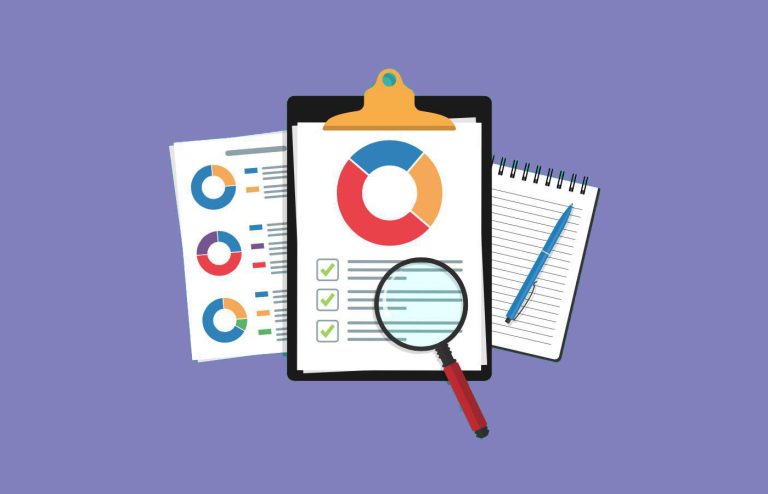At first glance, goodwill can appear to be a fairly straightforward concept, and one might expect that its treatment under accounting standards is fairly uncontested. In fact, goodwill has a storied history. It has been subject to a significant amount of debate over the years as to what it actually represents, and how it should be accounted for both initially and subsequently. In particular, the accounting for goodwill is surrounded by debate given the challenge of coming to consensus on the nature of goodwill. This is largely due to the fact that goodwill is not identifiable and cannot be directly measured.
This debate has recently increased in intensity with the completion of the International Accounting Standards Board’s (IASB) Post-Implementation Review of International Financial Reporting Standard (IFRS) 3 Business Combinations (equivalent to Hong Kong Financial Reporting Standard (HKFRS) 3), which found that stakeholders have mixed views on the accounting for goodwill. In particular, some stakeholders are concerned that the impairment test for goodwill impairment is unduly complex and does not appear to be working as intended, meaning that impairment losses may be recognized “too little, too late.”
In response, the IASB is carrying out a research project on goodwill accounting, and in March published Discussion Paper Business Combinations – Disclosures, Goodwill and Impairment to explore whether companies can provide investors with more useful information about business combinations.
To contribute to the global debate, the staff of Hong Kong Institute of CPAs and the staff of Accounting Standards Board of Japan (ASBJ) have published a research paper (RP), Goodwill: Improvements to Subsequent Accounting and an Update of the Quantitative Study. The RP’s objectives are to:
- Share new findings from an updated quantitative study on goodwill recognized by entities.
- Analyse the existing accounting requirements for goodwill.
- Explore alternative views on the subsequent accounting for goodwill.
Quantitative study
The RP presents new findings from a quantitative study of the goodwill recognized by companies in major stock markets, namely Hong Kong, Japan, the United States and Europe. Key observations from the study include:
- A steady increase in the amount of goodwill recognized by companies. From 2014 to 2018, there was an increase in the total goodwill of the stock market companies of 60 percent for Hong Kong, 74 percent for Japan, 45 percent for U.S. and 26 percent for Europe.
- Goodwill exceeded 100 percent of net assets for 18.8 percent of U.S. and 10.1 percent of European Union (EU) companies surveyed.
- Goodwill exceeded 100 percent of market capitalization for 2.6 percent of EU and 1.6 percent of Japanese companies surveyed.
- The implied time to fully expense goodwill was 122 years for the U.S., 78 years for the EU, and 64 years for Hong Kong and Japan.
Considering the above, it is unlikely that the impairment-only model for goodwill is working as intended and that this has led to the “too little, too late” issue noted above as a concern among some stakeholders.
Existing requirements
IFRS/HKFRSs establish two accounting concepts for goodwill:
- HKFRS 3 requires goodwill to be recognized upon a business combination as an asset. It is measured as the excess of the consideration paid for the acquiree over the fair value of the identifiable net assets of the acquiree (ignoring non-controlling interest and step acquisitions for simplicity). The RP refers to what HKFRS 3 calls “goodwill” as acquired goodwill (AGW), given that it arises upon an acquisition.
- Internally generated goodwill, which Hong Kong Accounting Standard (HKAS) 38 Intangible Assets prohibits from being recognized as an asset.
AGW is not currently amortized but is subsequently tested for impairment regularly under HKAS 36 Impairment of Assets. This is an “impairment-only” regime, and a reason why stakeholders have voiced concerns around the “too little, too late” issue.
Arguments for improvements
The staff of the Institute and the ASBJ both support an amortization plus indicator-based impairment approach for the subsequent accounting for AGW, and consider this approach as an improvement to the usefulness of financial reporting. The RP refers to this as an “amortization plus impairment” approach. While the staff suggest impairment be retained, they recommend an indicator-based approach under which the impairment test would only be performed if impairment indicators exist. This is already the approach for other assets in HKAS 36.
Additionally, both staff think that amortization should be applied to the AGW arising from each individual business combination as a whole (that is, the AGW asset arising from a particular acquisition should not be disaggregated into components with different amortization schedules).
The RP presents these common views of both the staffs from bilateral perspectives, reflecting the staffs’ respective ways of looking at the nature of AGW. The following provides a brief introduction to the view of each staff.
Introduction to the ASBJ staff view
The ASBJ staff think AGW is a “wasting asset” (that is, an asset that diminishes in value over time) and, to faithfully represent this nature, financial statements need to reflect the reduction in value.
As a result of this wasting nature and due to other factors, the ASBJ staff propose that AGW be amortized in addition to being tested for impairment. Impairment serves to signal the lack of recoverability of the carrying amount of AGW and amortization signals the consumption of AGW. Both impairment and amortization are necessary.
Amortization period
The ASBJ staff think that the amortization period should be based on the period that management expects to generate incremental cash inflows arising from the acquisition. In addition, the ASBJ staff think that a maximum number of years should be established by the standard-setter for the amortization period to strike a balance between the provision of relevant information and the need to respond to the concerns over the “too little, too late” issue.
Introduction to the Institute staff view
The Institute staff provides two key points as to why amortization (with indicator-based impairment) will improve financial reporting:
Key point 1: Amortization better reflects the nature of AGW.
1. Better reflects how AGW becomes increasingly less representative of the acquiree and consolidated entity.
Amortization with impairment better reflects the fact over time, the historical amount recognized as AGW becomes increasingly less reflective of the current fair value or current book value of the entity, and therefore more meaningless as a balance sheet item. Over time, an acquisition may be integrated, and the overall entity enhanced and transformed in myriad ways to the point where the originally recognized AGW, and any subsequent impairment charge, becomes largely meaningless.
2. Better opportunity to show how an acquisition is utilized
Amortization with impairment is preferable to impairment-only because it provides a mechanism to show the utilization of AGW. Under amortization, users will be able to see the timeframe in which an acquisition is expected to be utilized (via the amortization period), and observe a systematic allocation of AGW versus income earned by the entity. This would better tie AGW to the performance of the acquisition.
3. Improves comparability between entities that grow organically and through acquisitions
When AGW is recognized as an asset, the financial reporting of entities who primarily grow organically begins to diverge from that of entities who primarily grow through acquisitions. In this way, accounting is biased towards entities depending on their growth strategy. Amortization would ensure that AGW balances will eventually be expensed in a systematic manner, and this will improve comparability.
Key point 2: Impairment-only supports increasingly large goodwill balances that may negatively incentivize management and misrepresent risks.
Increasing AGW balances can contribute to weakened balance sheets and lead to situations where more of the balance sheet is made up of a highly nebulous asset, which cannot be identified, separated, transferred or liquidated. The impairment-only regime may mask risks and exacerbate undesirable management incentives as follows:
- It may incentivize “big bath” accounting practices due to the subjective nature of assumptions used in the impairment test.
- It may incentivize management to pay more for acquisitions given management can ignore subsequent expense on AGW for a foreseeable future.
- It may incentivize management to borrow against an inflated and speculative asset-side of the balance sheet.
- To maximize financial reporting metrics management may be incentivized to delay impairment as long as possible.
- Inflated assets and equity and suppressed expenses can influence management’s decisions and affect the ability to proceed with certain corporate actions.
Amortization would ensure that increasingly large goodwill balances supported by the impairment-only model will be allocated to expense on a timely basis.
Amortization period
The Institute staff think that the amortization period of acquired goodwill should reflect the expected utilization of an acquisition. The process of determining an amortization period based on this principle will benefit both (a) management, as it will be required to think critically about its post-acquisition plans before acquisition date, and (b) users, as they will gain insight into management’s expected timeline for an acquisition.
Going forward
The RP can be found at the Institute’s website, and we encourage interested readers to download the full version to peruse the complete analysis of the Institute and the ASBJ.
Stakeholders are invited to provide their views on the IASB’s Discussion Paper Business Combinations – Disclosures, Goodwill and Impairment, which can be found on the IASB’s website.
The Institute will be continuing its joint work with the ASBJ to share the findings and analyses from the RP globally, and provide input to contribute to improving the accounting for goodwill. The Institute will also be seeking comments on the IASB’s Discussion Paper though our invitation to comment, which is available on the Institute’s website.
This article is contributed by the Institute’s Standard Setting Department














